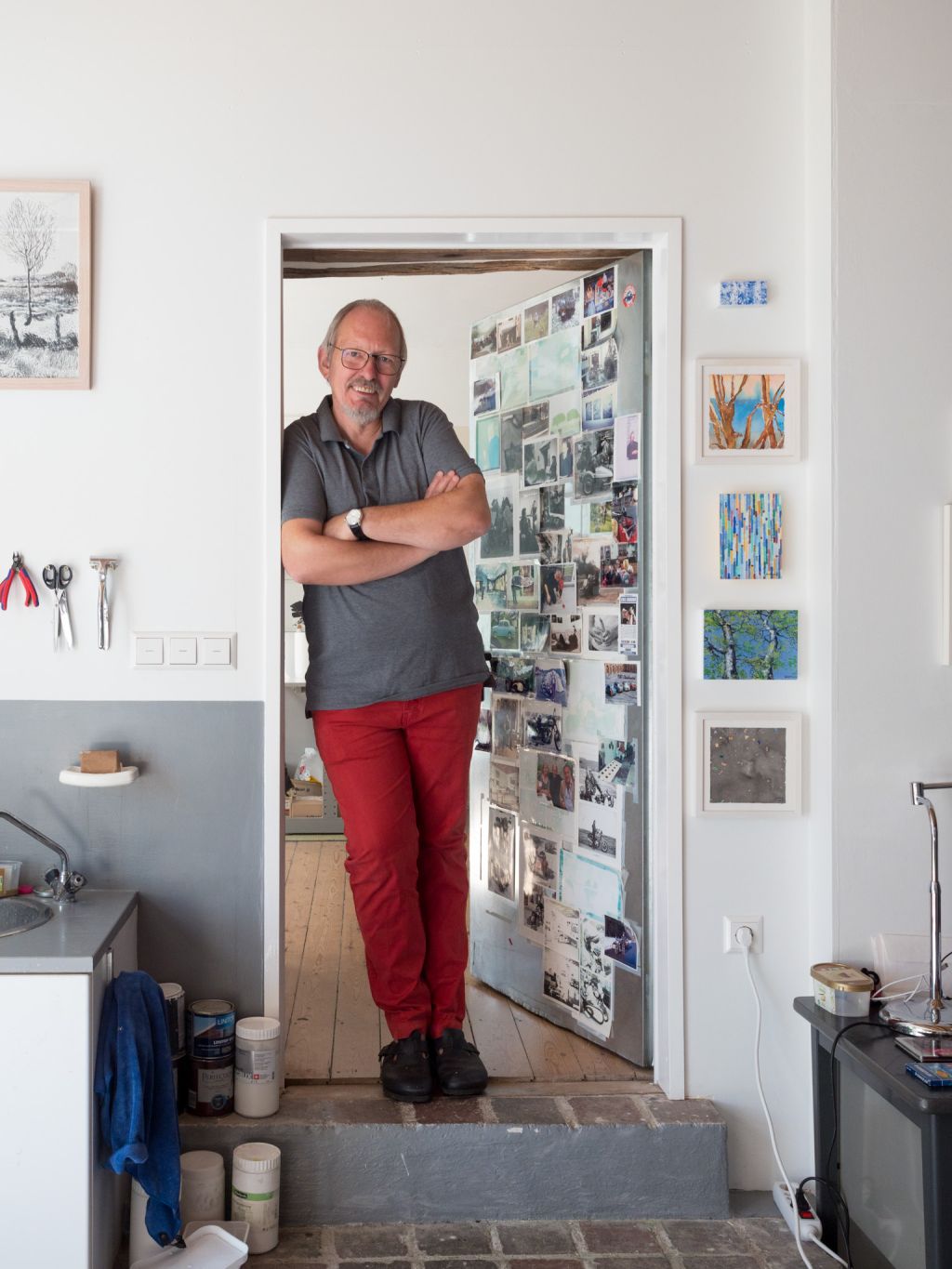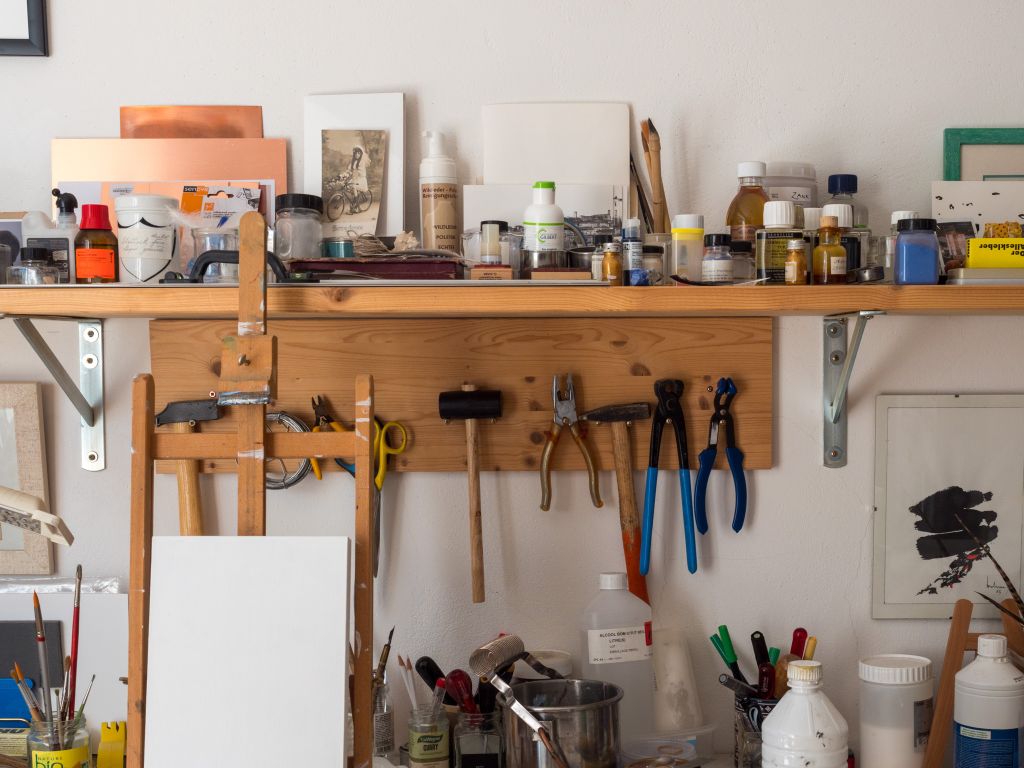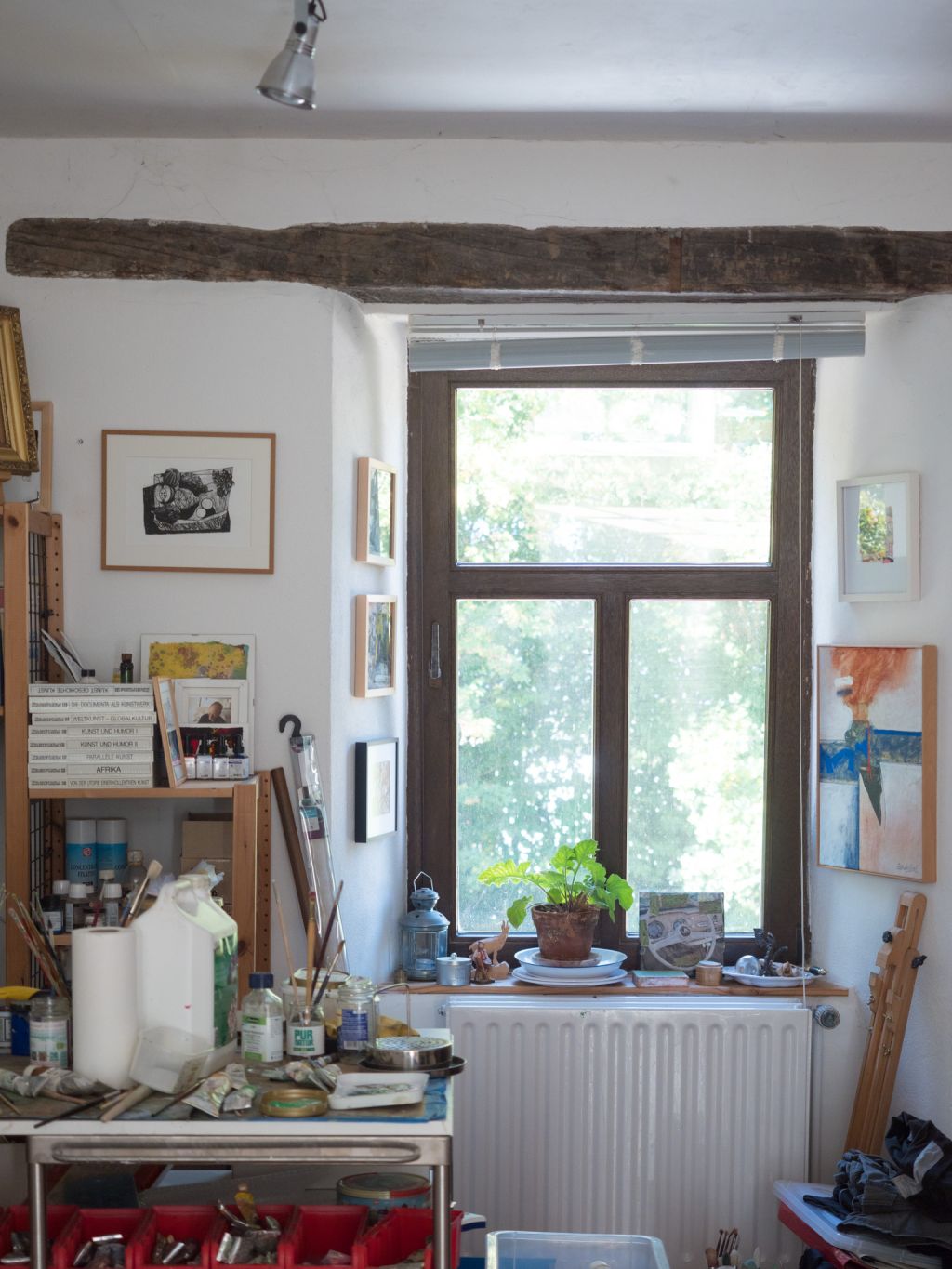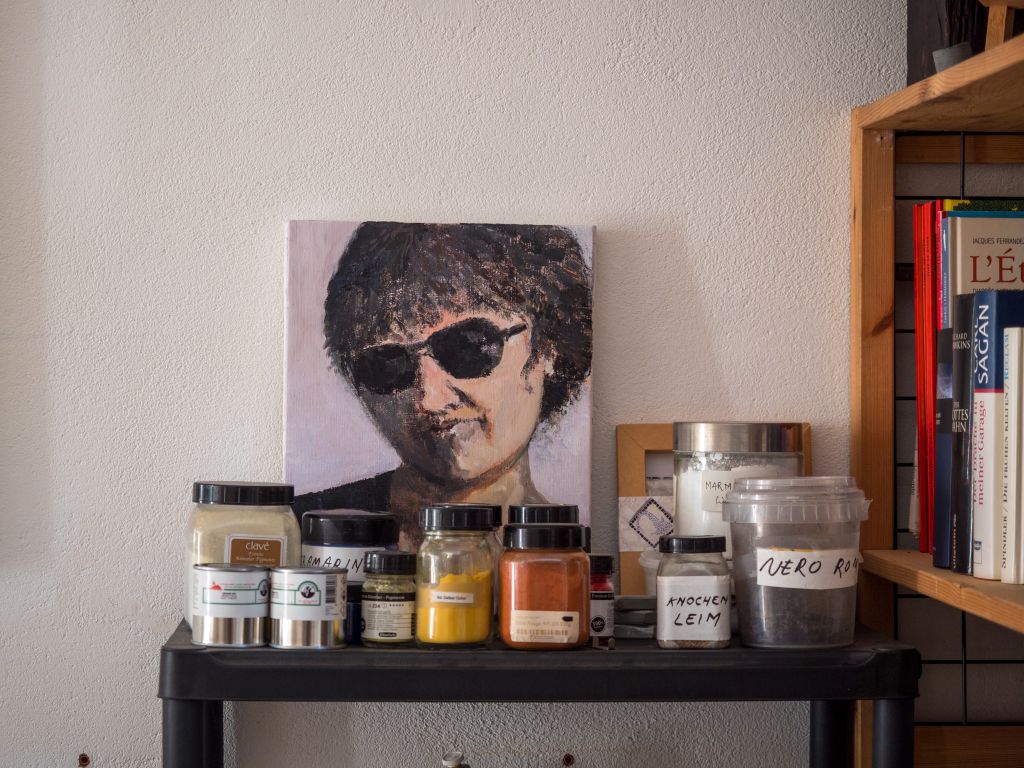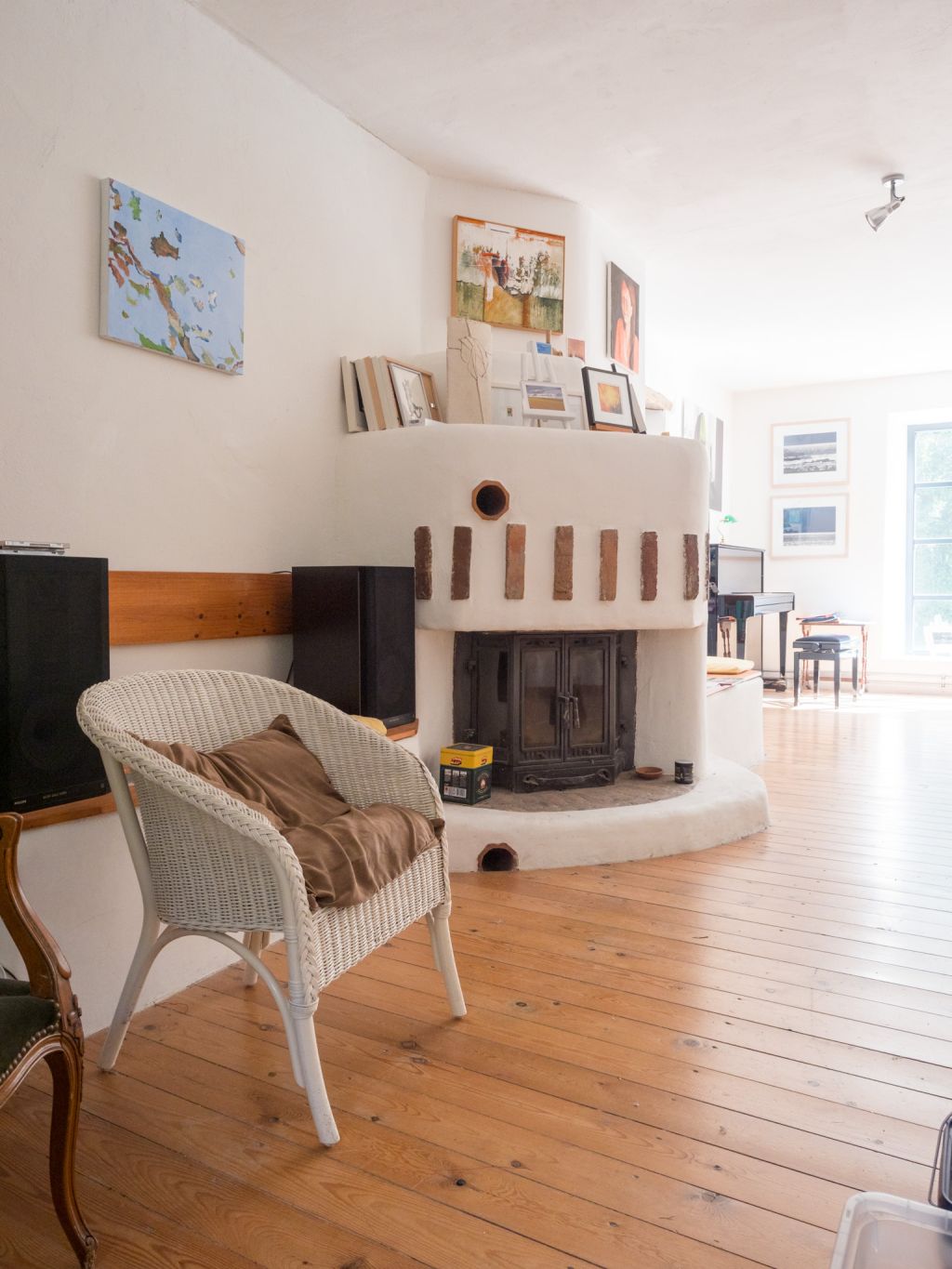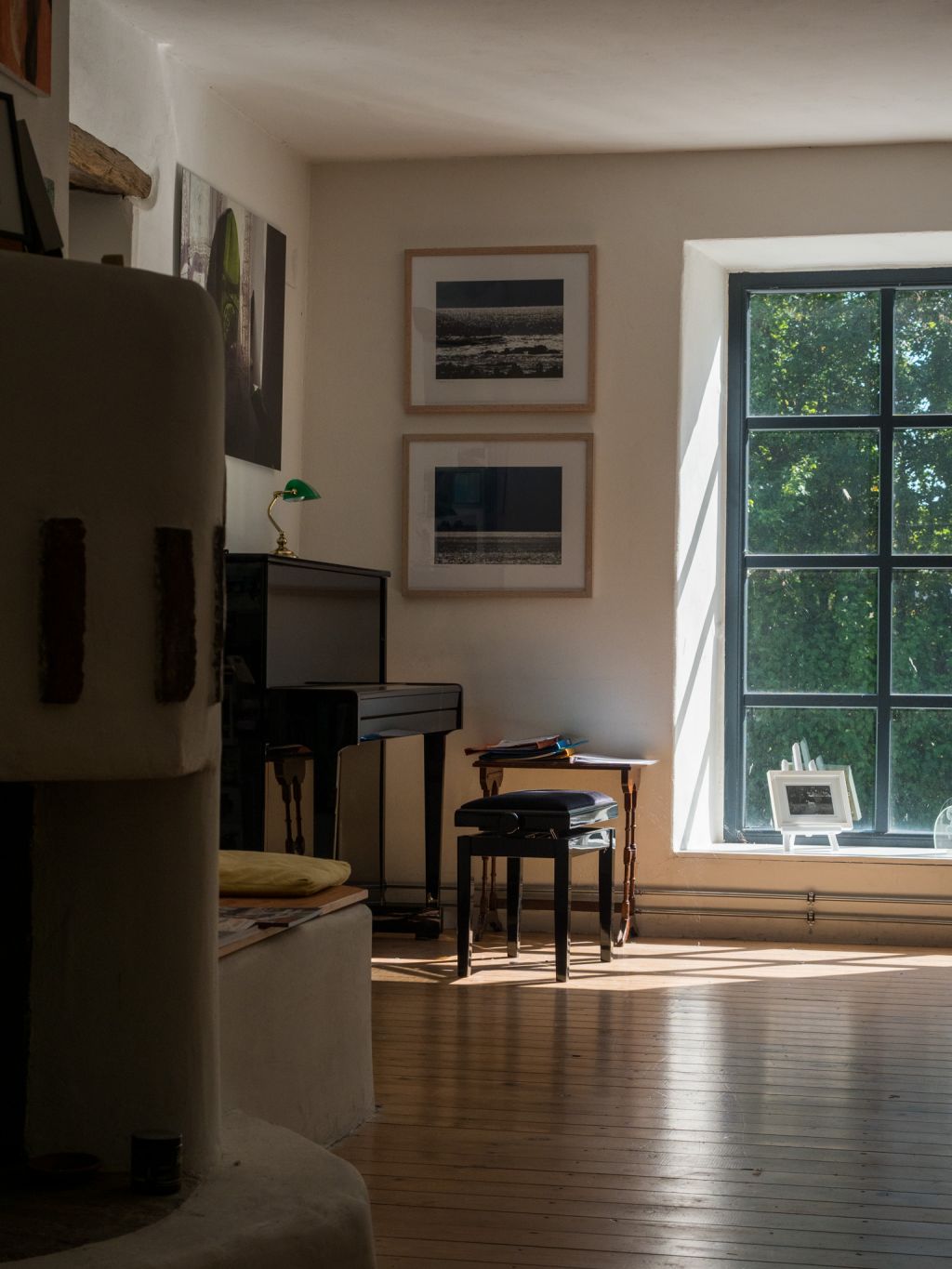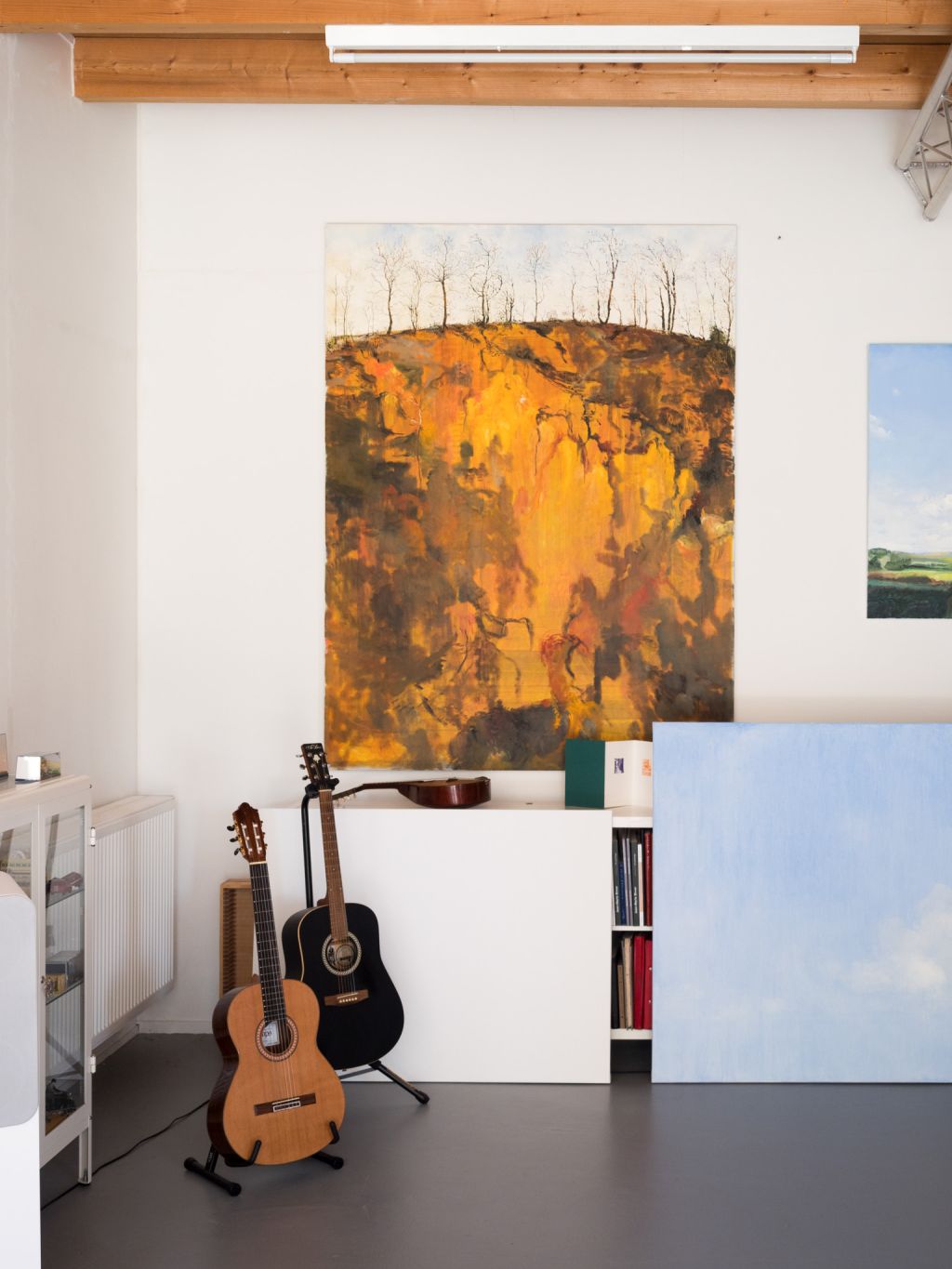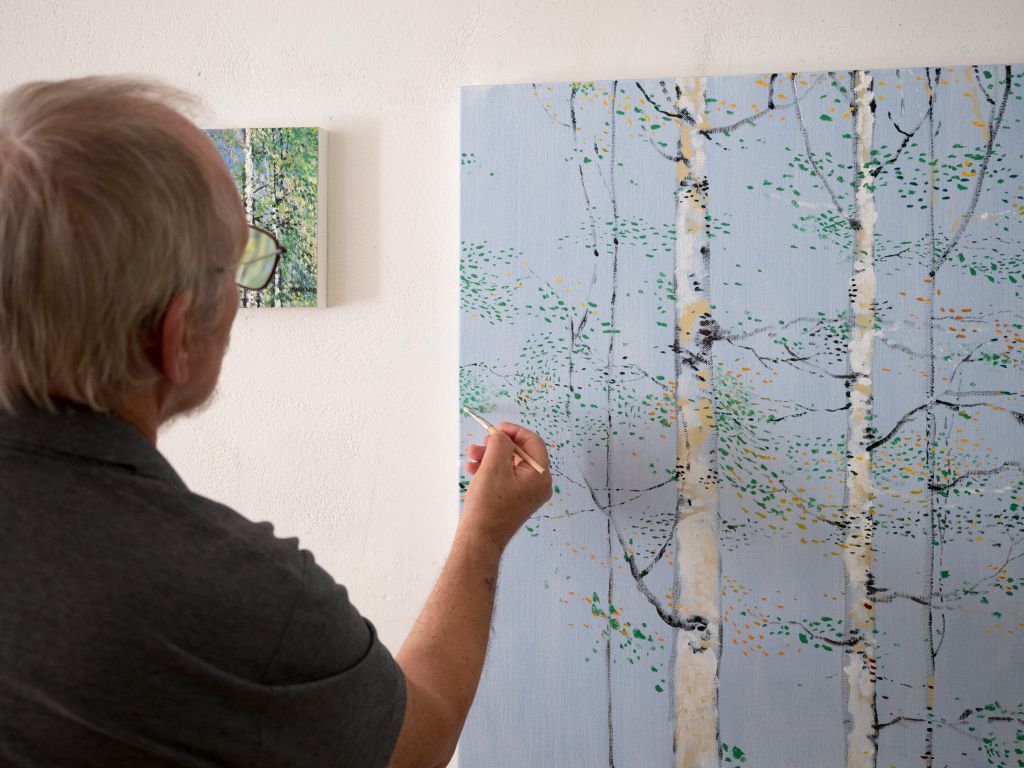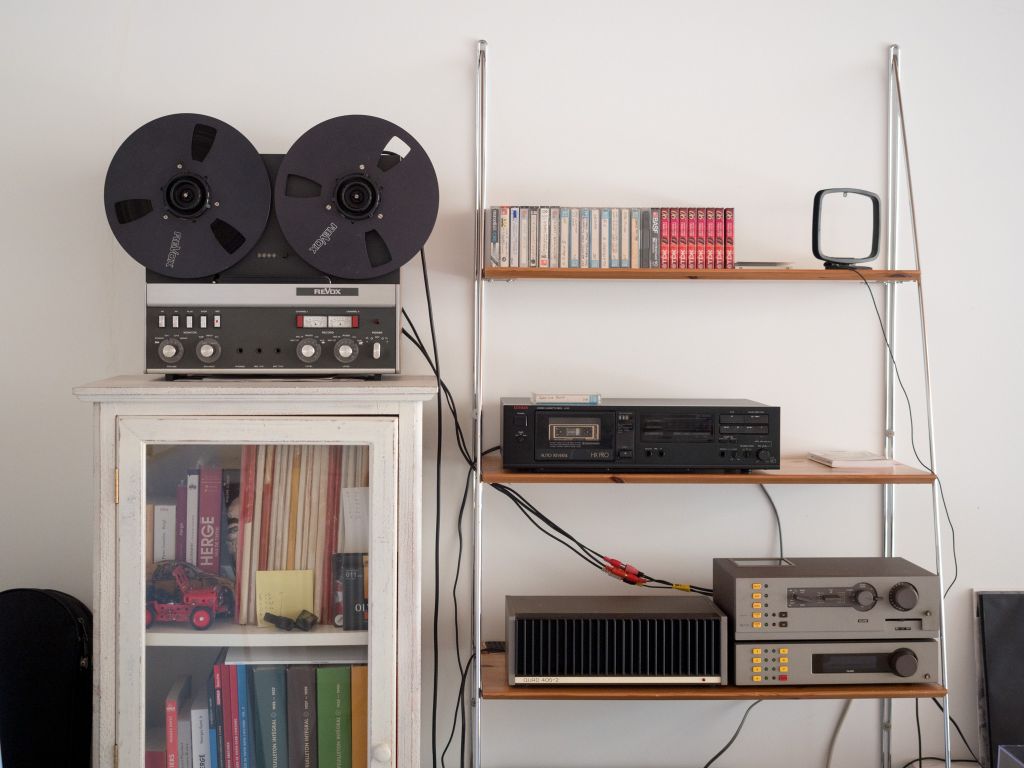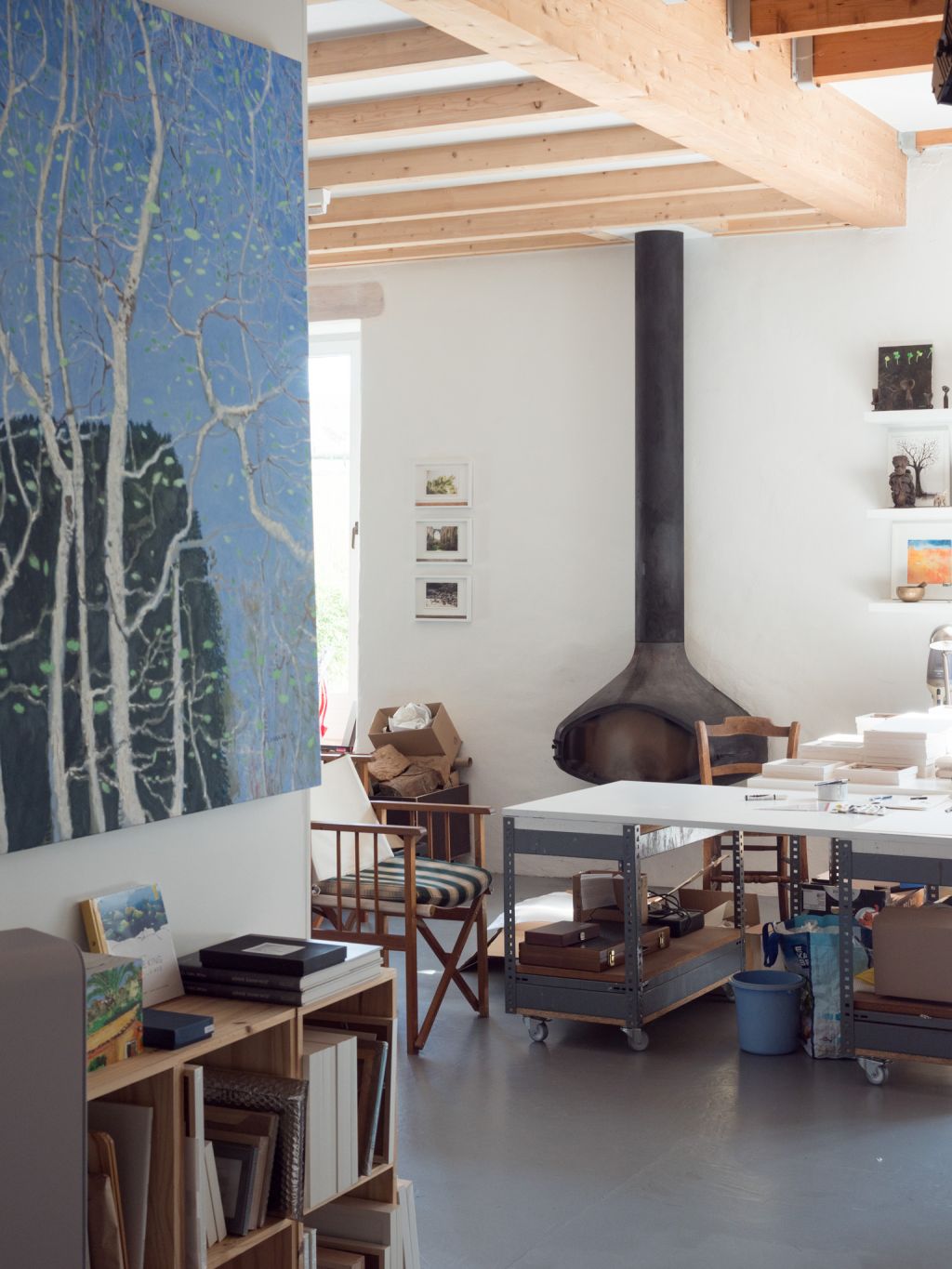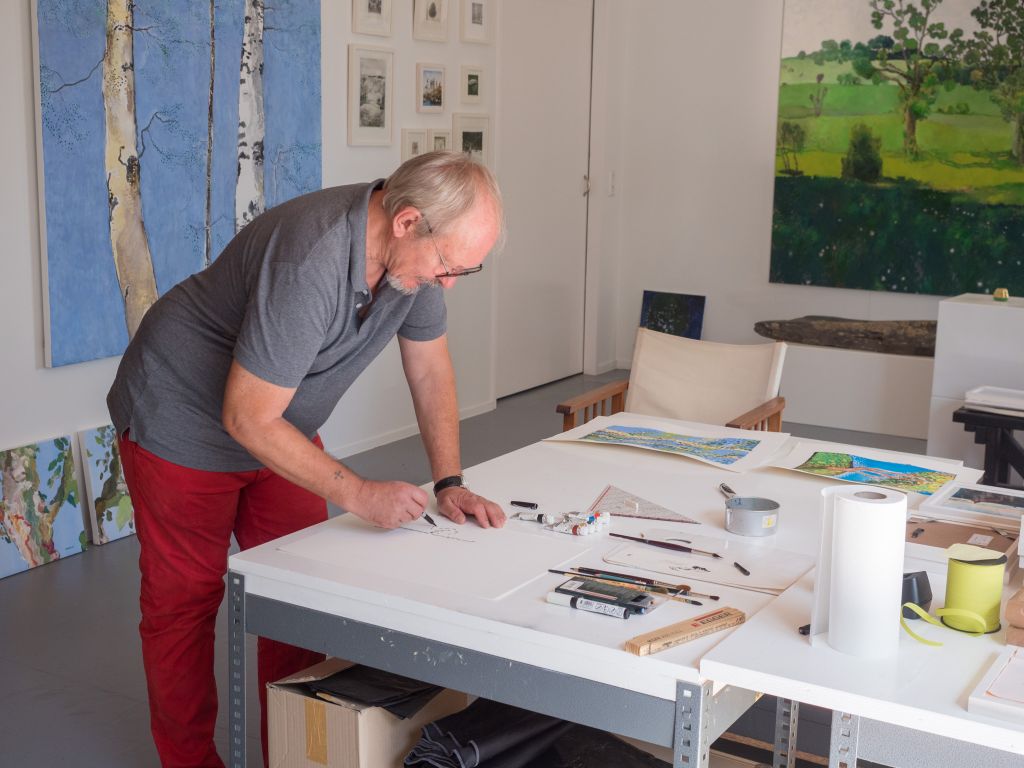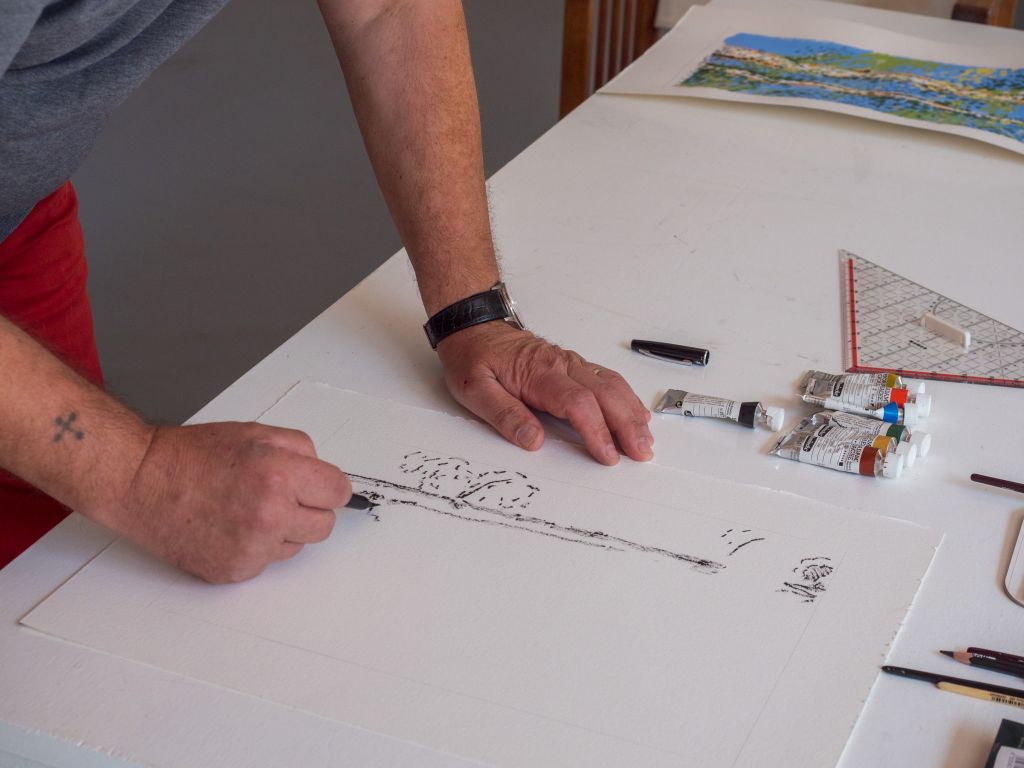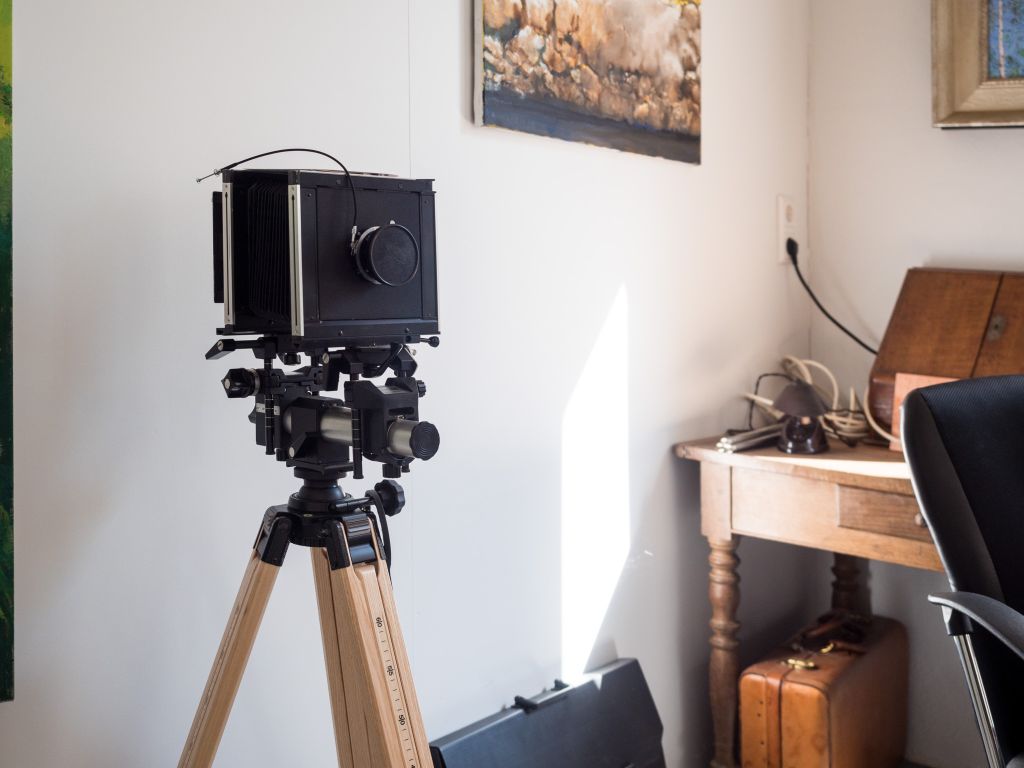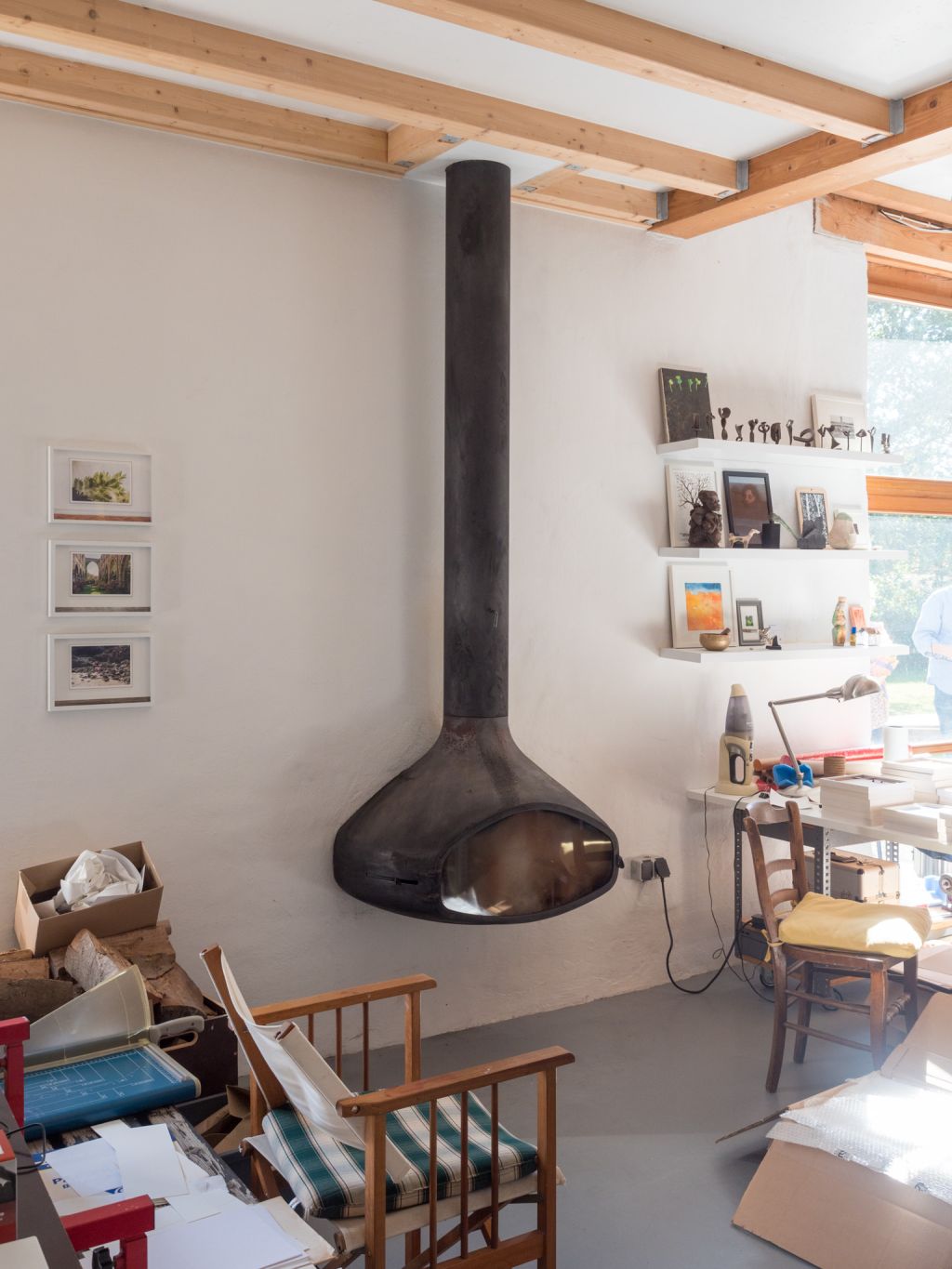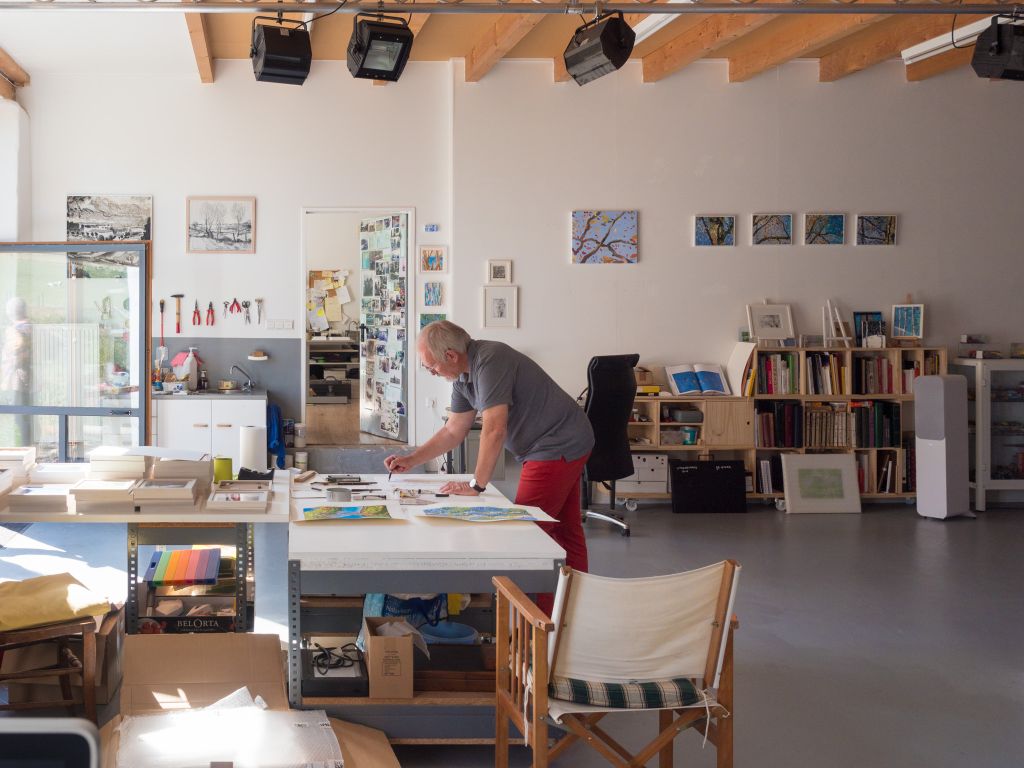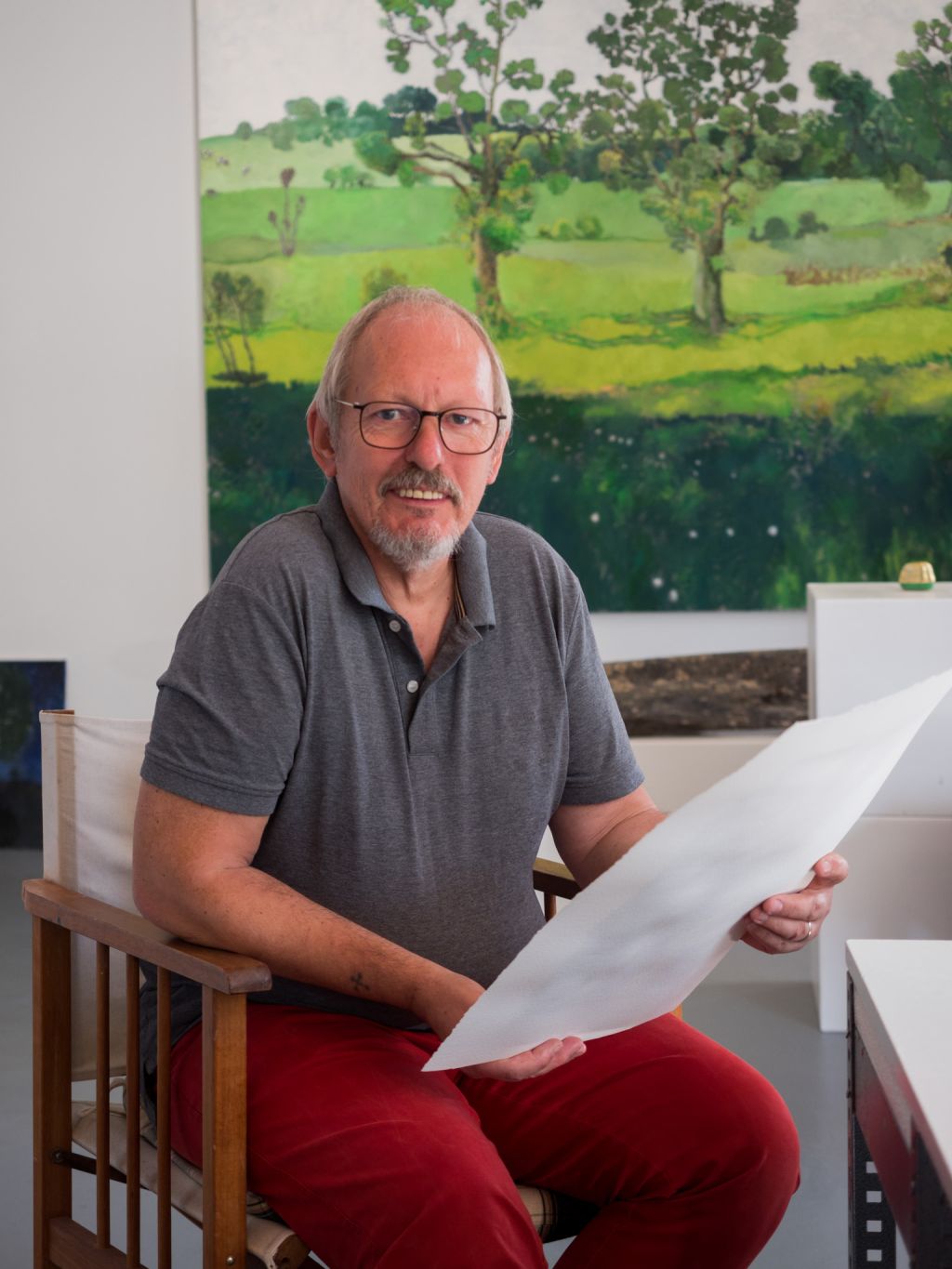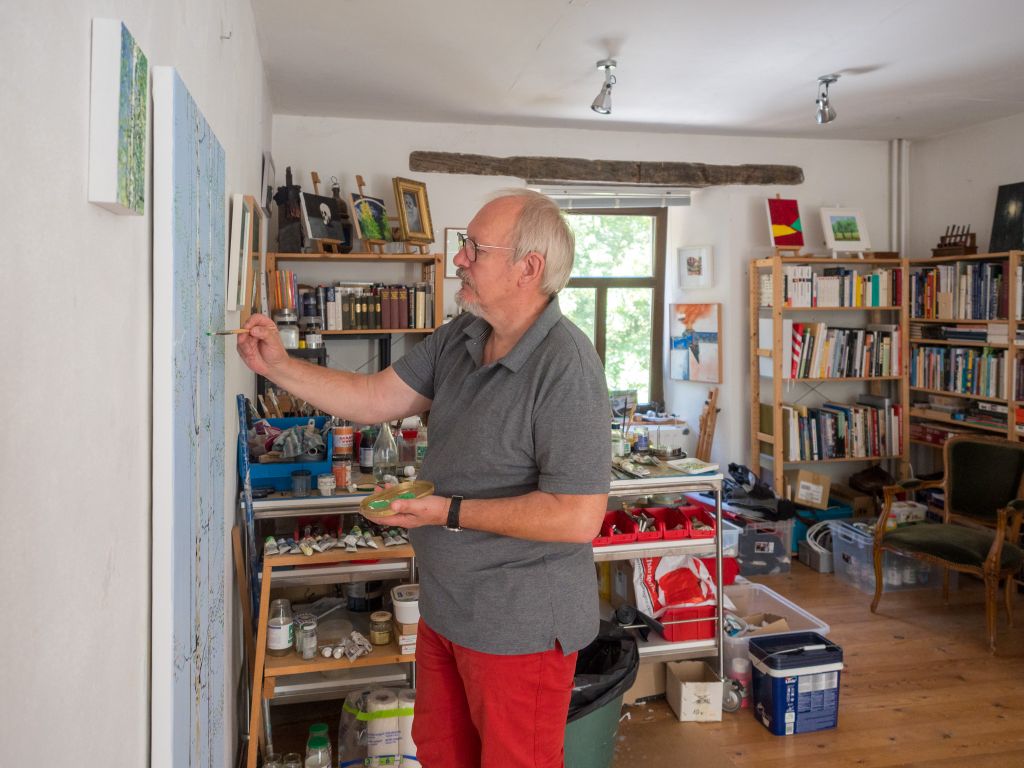Visit to Jean-Marie Biwer's studio
Serene inspiration of place
Artist Jean-Marie Biwer welcomes us to his rural home in the north of Luxembourg, for a tour of his beautiful, simple and luminous studio.
At the end of September, when the majestic sun is still warming the meadows, Jean-Marie Biwer greets us with a smile on the porch of his house. From the first moment we met him, we knew that our visit was going to be doubly enjoyable: not only were we delighted to meet an artist whose paintings are authentic odes to nature, but we also realised that he and his wife are extremely likeable people, with a rich cultural and human background.
The house is located at the northern tip of the Oesling, in a village whose name we had never heard before, a hamlet in fact, hidden away at the bottom of a secret valley and surrounded by lush green meadows. At first glance, the house seems very pretty, authentic, rural and even poetic, so much in harmony with itself and its owners. Yet when the couple bought it in the early 1980s, it was little more than a pile of ruins. Jean-Marie Biwer: "The house wasn't in great shape, but we liked it straight away. We could see ourselves in it, because it had a soul, a deep connection with the landscape and past traditions. We knew it could be brought back to life, even if it meant a lot of work. And indeed, the renovation was spread over several years, as and when we were able. We had to be patient, and with time we managed to restore it completely, while respecting its own identity.
As the building was improved, the workshop area also evolved to become what it is today, a large, light-filled space with a direct link to the neighbouring garden and meadows through a large bay window.
The studio is divided into two rooms at the rear of the building. The first is part of the old building, while the larger room is in the extension added in 1996 – 1998.
The first room has a cosy, intimate feel, with wooden floors, a fireplace, a piano, furniture filled with books, and a space dedicated to storing brushes and pots. The second space, the studio-gallery, is more streamlined and modern. With its light-filled loft feel, it features high ceilings and a concrete floor. The walls are painted white, which has the advantage of enhancing the natural lighting. The studio is clearly focused on work and creation, with a few touches of relaxation and pleasure. Here, easels and everyday items such as the fridge and sofa coexist in harmony. With its large volume, light wooden beams, work tables of different shapes and sizes, shelves of books and other objects, and works of art hanging on the walls, the studio emerges as a bright, functional space that also generates sensations. Not at all messy, well organised, it is also a place that is occasionally used to receive visitors who come as friends or are interested in an acquisition. The walls are covered with the artist's works in all formats.
The simplicity of this light-filled studio, with its rough concrete floor and immaculate walls, is counterbalanced by details that give it a discreetly romantic feel.
“I began to paint scenes of
ordinary life.”
Jean-Marie Biwer
Wunnen: Is this where your inspiration comes from, or is it the nature you see outside?
Jean-Marie Biwer: When I was young, I did very different things. Like young people everywhere, I wanted to change things, to change the world. At a certain point in my life, I realised that painting was increasingly excluded from the contemporary art scene, which favoured photography, video and installations. So I started painting scenes from ordinary life and from what was immediately in front of me, the birch trees in the garden, the cows in the meadow, the clouds... I decided to take an interest in what touched me directly, and I made something that only exists here, in this region, with these lights. I go out into nature a lot, I take my sketchbooks, then I come back to the studio and get down to work... No longer wanting to change the world, I've started to develop an expression that everyone can understand.
Wunnen: The studio appears simple and bright, but the space is studded with objects of memory and architectural elements...
JMB: The studio is part of the house and is linked to its history. That's why we've kept the traces of the past visible, the original walls, the beams, the stove... The studio is not only a working space, it's also a living space and above all a space dedicated to creation. To do this, I also need objects that I love and that tell me their stories: guitars, a record player, a tape recorder, a large-format standing room, a whole analogue and sensitive universe. These are my interests, my sources of emotion, and the equipment isn't there just to look pretty. They work, I use them regularly, I have old magnetic tapes, vinyl records, old cassettes. While I'm working, I like to listen to music, from classical to the Stones...
Wunnen: Your studio is very clear, free and simple at the same time...
JMB: There are no secrets with me. The only secret I can cultivate is in my work. I don't try to mythologise. I don't try to pretend that I have secret recipes. For me, what's important are the shapes and rhythms in painting, like the wind blowing through a tree, I like the direction in which it pushes me. I like freedom in art, I like to develop a pulse in phase with nature. And my studio allows me to simply listen to this inspiration.
Photos : P. Lobo
